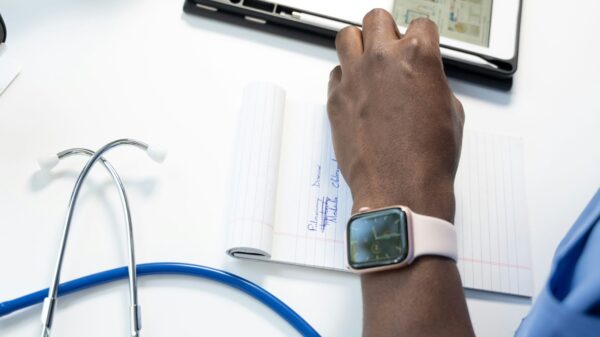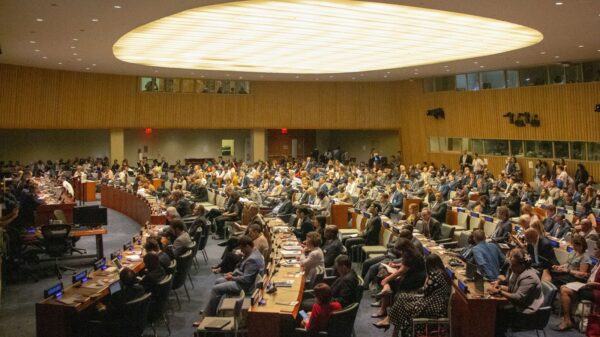A growing student demand for biology classes is adding pressure on an already understaffed and under-resourced Department of Biology, according to professors and students within the department. Professors and students say that the department is not able to meet the needs of some students, leaving them feeling frustrated with the deprived learning environment.
Full-time biology professor Fatimah Jackson said that an unexpected number of faculty retirements, deaths and resignations has led the biology department to schedule 15 interviews to fill five full-time professorship positions within the department.
According to Jackson, “Between the previous school year and now, biostatistician Dr. Franklin Ampy passed away, plant biologist Dr. Mary McKenna retired and two of our junior colleagues Dr. Michael Lipscomb and Dr. Michael C. Campbell resigned to pursue research and work at other universities.”
Lipscomb joined the University of Minnesota in 2022 and Campbell joined the University of Southern California in 2021.
Jackson expressed enthusiasm for the five open positions this summer, “This is a unique opportunity for the department to have this many openings,” she said.
She went on to emphasize the importance of providing students of biology with the quality of instruction expected from the discipline. “Our students who are in biology have to receive the quality of education that the discipline demands,” she said. “The university needs to make the natural sciences a priority, in terms of facilities and especially staffing.”
A teaching assistant in the biology department, who chose to remain anonymous for personal privacy reasons, explained how understaffing in the department has opened up many more full-time teacher assistant positions.
They also explained that there is, in their opinion, underfunding for the department which has led to situations where lab supervisors needed to spend their own money in order to be able to teach a lesson. The biology department brings in about $1 million dollars in research and training grants annually to keep the program afloat, according to Jackson.
“We have labs where students need to be able to set up microscope slides on their own and create their own slides,” the teacher assistant explained, “but we don’t have the materials or money for the slides and organisms so we end up recycling most of the labs and lab equipment.”
Based on Amazon, the cost for a 50 pack of microscope slides is about $10 on average, with slides used for organism testing costing $40. Dr. Fatimah Jackson mentioned that the National Institute of Health (NIH) and National Science Foundation (NSF) provide the biology department with a majority of the funds for their laboratory equipment.
“The bottom line is that the material resources at Howard University are lacking,” Jackson said, “and that is really unfortunate for the amount of potential within this program.”
After reaching out to the university more than once, The Hilltop did not receive a university statement about the troubles facing the Department of Biology in time for publication.
Dr. Courtney Robinson, the current Interim Chair of the biology department, feels as though the university needs to better align its allocation of resources, which she believes favors tenured faculty.
“At the college level we have to look at how we handle service courses in comparison to our upper level courses specific to tenured faculty,” Robinson said. “…we’ve had to put more resources towards our foundation without drawing from other sections of the department.”
Students in the department say they are feeling the effects of understaffing and a lack of resources. The trickle-down effect of these issues is leaving students feeling unprepared for the MCAT, the standardized medical school exam, and ultimately careers in the sciences. Student concerns are mounting as they worry that they won’t be able to get the proper education they need to be successful in their field.
“Coming in as a freshman, if you hadn’t taken any extensive courses in high school relating to Biology like AP or dual enrollment, the resources and understaffing made it hard to matriculate into a learning environment,” Michael Davis Jr., a junior from Columbus, Ohio, said.
As a former BS/MD student, Davis Jr. believes that the biology department could benefit from improved consistency. He expressed that the professors are highly qualified, however, understaffing and resourcing issues are causing an inconsistency in the presence of instructors in the classroom which is resulting in students losing discipline.
Davis continued by saying, “Many students are struggling to cope with the outside factors of understaffing and lack of resources that are impacting their education.”
However, as a part of the department’s hiring team, Jackson has identified a deeper foundational issue that brings perspective to the situation.
She believes that the 21st century is the “century of biology like no other period of time so the Department of Biology requires disproportionate resources to be competitive with other programs in the field.”
Robinson also emphasized the importance of the university investing in the research, “We can’t be a research institution if we don’t invest in our research,” she said. “Happy researchers make excellent teachers – invest in our faculty.”
The Department of Biology, officially established in 1922, is an accredited program that has been conducting research and matriculating Howard students for more than 100 years.
Currently, there are approximately 1,000 biology majors currently in the College of Arts & Sciences (COAS) majors this school year, with 12 full time faculty members, six part time faculty and 25 total teachers assistants on staff, according Professor Jackson and the biology department directory.
The biology department, which is within the College of Arts and Sciences (COAS), shares similar challenges with understaffing and a lack of resources experienced by COAS as a whole. A previous article reported that enrollment increases within the college have resulted in a strain on both students and faculty, which may be suggestive of a residual effect on the biology department.
Copy edited by Jasper Smith













